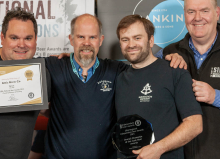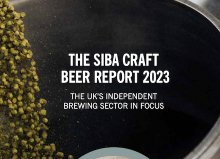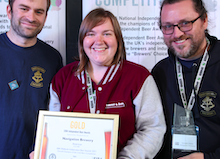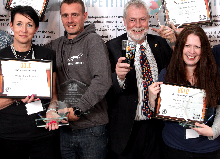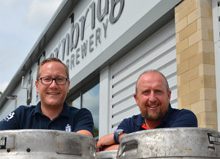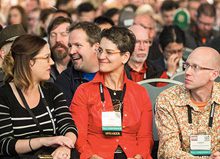Energy from waste at Castle Rock Brewery
 Nottingham’s Castle Rock Brewery has begun a year-long evaluation of an anaerobic digester designed to convert waste from its brewing processes into energy and cleaner waste water. The brewers believe this is a first in UK brewing and only the seventh such scheme in any industry in the world.
Nottingham’s Castle Rock Brewery has begun a year-long evaluation of an anaerobic digester designed to convert waste from its brewing processes into energy and cleaner waste water. The brewers believe this is a first in UK brewing and only the seventh such scheme in any industry in the world.
The scheme, called H2AD Micro AD, consists of a self-contained digester and its ancillary plumbing and by-product handling. It is intended to reduce the brewery’s energy bills by up to 70 per cent. The methane biogas produced will be returned to the brewery to help in the energy-intensive start to the beer making process or converted into electricity.
Castle Rock managing director, Colin Wilde, says he is happy to be one of the first in Europe to make use of this new and innovative technology. “It’s even more pleasing that it was developed by the University of Nottingham in partnership with local manufacturing company Lindhurst Engineering based in Sutton-in-Ashfield.
“We’re excited to be able to make such a valuable use of the research carried out at the University of Nottingham. Their test-beds prove how naturally occurring bacteria and our waste, heated to around 30 degrees, can create something useful in a continuous and very cost effective process. Once it’s up and running, all we have to do is pump the waste in and reap the rewards.
“We create a great amount of carbon-based waste from barley, hops and yeast. The brewing process leaves thousands of litres of water fit only for returning as sewage, now these disposal issues are resolved,” he says.
The process has been developed through a relationship between the University of Nottingham and Lindhurst Engineering where the head of research and development is Dr Laura Porcu. She explains that H2AD Micro AD is a hybrid anaerobic digestion and microbial fuel cell but, unlike traditional AD, the H2AD technology is on a micro scale with each cycle taking three days.
“The H2AD cleans waste effluents using microbes to simultaneously produce bioenergy, biogas and reusable digestate. The technology significantly reduces chemical oxygen demand levels, energy consumption, and carbon emissions.
“The most significant feature is that it allows all companies, big or small, to look at their environmental responsibilities since the H2AD Micro AD is not only plug in and play but, more importantly, low cost, modular and scalable with a smaller carbon footprint compared to traditional AD,” says Dr Porcu.
Lindhurst Engineering’s chief executive Martin Rigley says the future holds great promise. “We take great pride in telling businesses about our vision of the future. In the light of the Paris agreement for climate change, our technology allows all companies and organisations in all countries, developed or developing and irrespective of size, to engage with renewable energy and reduce their carbon emissions and footprint.”
— ends —






